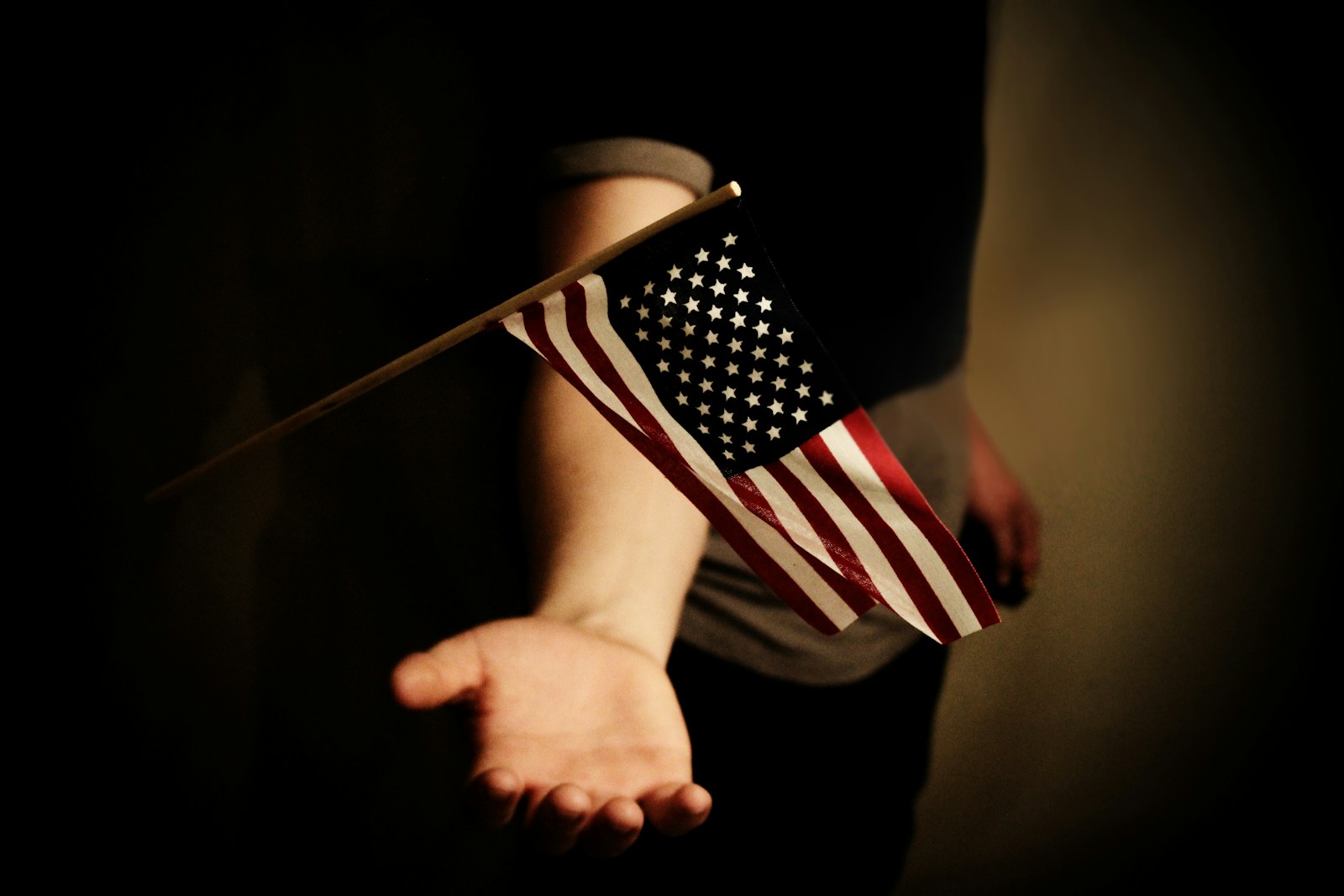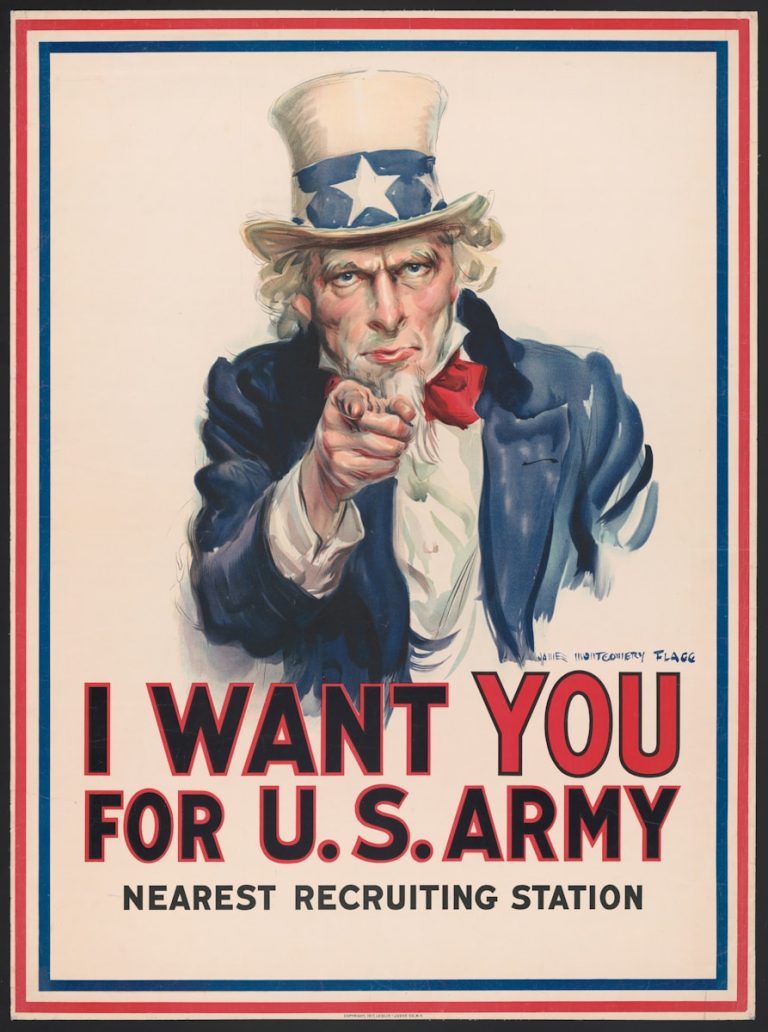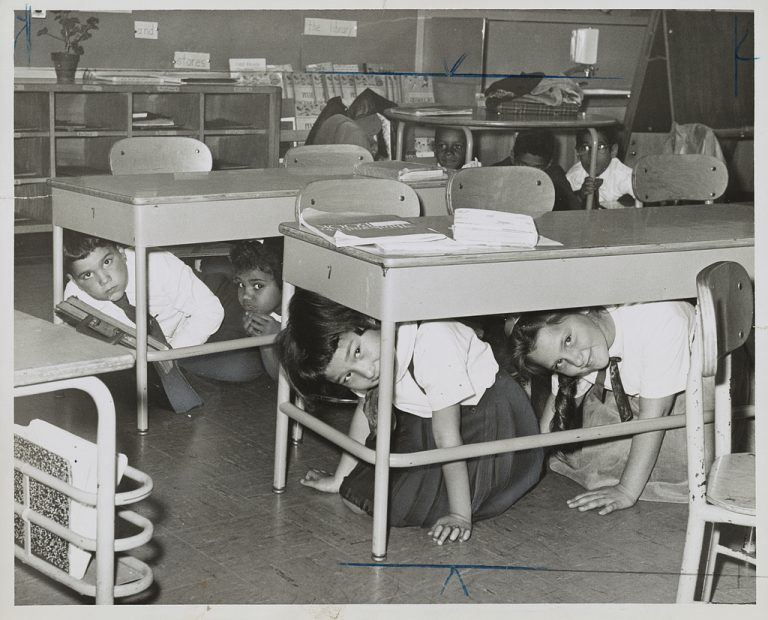Your cart is currently empty!
Red, White, and Influenced: The Legacy of American Propaganda

In the United States, propaganda has shaped public perception across generations, from Colonial America to the Cold War and beyond. Through wartime media, school curricula, and present-day news, it has influenced how Americans view patriotism, loyalty, and morality, often reducing complex issues to a simplified black-and-white perspectives.
The Early Role of Propaganda in the United States
American propaganda has long shaped American’s perceptions in discreet ways, with roots going back to Colonial America and the Revolutionary War. Through powerful slogans, pamphlets, and speeches, the struggle with Britain was framed as a battle between “good” and “evil,” fueling a patriotic fervor that helped unify the colonies. This messaging planted seeds for a culture where information could be used to mobilize the public or even manipulate it.
By World War I, the government formalized these subtle tactics with the Committee on Public Information (CPI). Through carefully crafted patriotic messaging, the CPI stoked unwavering loyalty, boosted morale, and swayed public opinion. This set the stage for an era when Americans’ support for national efforts could be shaped by what they read, heard, and saw, often without fully knowing who was behind the messaging.
WWII: Promoting Unity and the Ideal American Lifestyle
World War II marked a major turning point in American propaganda, as the government fully embraced mass media to rally support. The Office of War Information (OWI), created in 1942, collaborated with Hollywood and news outlets to produce films, posters, and radio shows that framed the Allies as defenders of freedom. Posters like “Loose Lips Sink Ships” urged Americans to be vigilant, subtly suggesting that everyone, not just soldiers, was part of the war effort.
But it was not just about soldiers and battles. The OWI reached into everyday life, promoting the “ideal” nuclear family as a patriotic symbol. A strong, ‘traditional family’ with a patriotic father, a supportive mother, and obedient children became part of the war effort itself. This wasn’t just a vision of a stable home, but rather a concrete model for the kind of families and citizens the U.S. wanted, which were loyal, disciplined, and fully dedicated to the national cause.
Popular cartoons also played a role. Disney’s Der Fuehrer’s Face, for instance, featured Donald Duck in a satirical scenario where he lived in Nazi Germany, showcasing the oppressive nature of the regime while celebrating American values. This blend of satire and patriotism reinforced loyalty to the war effort. The imagery of family life, loyalty, and national pride wasn’t just a wartime construct, as it became deeply embedded in American culture itself, influencing societal expectations for years and decades to come.

Uncle Sam recruitment poster, 1917
The Cold War, Operation Mockingbird, and Education
With the Cold War came a new kind of American propaganda, as the U.S. government fought not just to win battles, but to win minds in an ideological war against communism. Through movies, news, and educational materials, the government painted communism as a looming threat, using fear to foster loyalty to American democracy and capitalism.
A crucial component of this strategy was Operation Mockingbird, a covert CIA program that began in the late 1940s. Through Mockingbird, the CIA recruited journalists and built connections with major news organizations to publish stories promoting pro-American narratives and vilifying communism or narratives that went against the status quo. The operation reached its peak in the 1950s and 60s, with journalists across prominent outlets reinforcing government agendas, often without readers knowing they were being influenced by the state. Operation Mockingbird exemplified the government’s reach into mainstream media, showing how the news Americans consumed was shaped by those with specific political agendas.
In schools, students encountered this clear divide between democracy and communism at an early age. Textbooks often highlighted American achievements, while downplaying complexities or controversies. Lessons framed American democracy as “good” and communism as “bad,” discouraging critical thinking or questioning. This approach didn’t just shape students’ worldviews but set a cultural norm that equated loyalty with acceptance of official narratives, planting the seeds for a society that discouraged independent thought.
Duck-and-Cover Drills, The Pledge of Allegiance, and Leave it to Beaver
The 1950s brought Cold War propaganda directly into classrooms. Children practiced “Duck and Cover” drills, franticly crouching under desks to “protect” themselves from a nuclear attack. Although this wouldn’t have protected them in a real nuclear strike, these exercises served as a constant reminder of a looming enemy, reinforcing fear and a sense of vulnerability.
Beyond safety drills, schools regularly engaged children in reciting the Pledge of Allegiance. Originally composed in 1892, the pledge gained renewed prominence in the 1950s as a patriotic exercise meant to instill loyalty and unity. With the addition of the words “under God” in 1954, the pledge emphasized the contrast between America’s values and those of communist countries, reinforcing the idea that the U.S. was a nation of freedom and faith.
The daily recitations of the pledge, often with school-aged children standing with their right hand over their hearts, symbolized unwavering loyalty to the American flag and the ideals it represented, subtly discouraging dissent and reinforcing a sense of nationalistic unity from a young age.

School children hiding under their desk during a ‘duck and cover’ drill in the 1950s
Popular entertainment reinforced these ideals. Shows like Leave It to Beaver, Father Knows Best, and I Love Lucy portrayed idealized suburban families, with each character fitting a specific role in the family and community. Characters who broke from these norms—like Eddie Haskell with his insincere charm or Lucy with her comedic defiance—were seen as troublemakers or “outsiders.” Eddie was a “bad influence,” and Lucy’s antics were played for laughs, subtly suggesting that nonconformity was either disruptive or absurd.
Mid-century television promoted social conformity, using humor and stereotypes to endorse traditional roles as the American way of life. This atmosphere encouraged “groupthink,” making it feel disloyal or even unpatriotic to question accepted norms, subtly linking conformity with being a “good American.”
Modern Propaganda in Schools, Media, and Culture
American Propaganda still shapes public perception today, often woven into the routines of everyday life. In schools, history is still largely taught with a patriotic slant, influencing how young people see what it means to be American. Even the structure of multiple-choice tests, with their clear ‘right’ and ‘wrong’ answers, can reinforce black-and-white thinking, discouraging students from questioning or exploring complex ideas.
Outside the classroom, social media influencers, political rallies, church sermons, movies, music, and advertising reinforce specific ideals that shape our sense of identity. Algorithms on social media curate content that mirrors users’ existing beliefs, creating ‘echo chambers’ that limit exposure to diverse viewpoints and contribute to a polarized view of the world. Films, music, and Instagram influencers promote the ‘American Dream’ as tied to consumerism, success, and individualism, shaping public ideas about happiness, morality, and even self-worth. Messages from advertising, lifestyle branding, and religious institutions can further define what’s seen as acceptable or desirable, influencing not only how we view society but also how we view ourselves. While these messages may be less overt than wartime propaganda, they quietly shape societal values, expectations, and individual aspirations.

Mainstream media and social media direct our thoughts and subtly guide our beliefs
The Legacy of Black-and-White Thinking
One of the most enduring impacts of American propaganda is how it promotes black-and-white thinking. By reducing complex issues to simple “us versus them” narratives, propaganda stifles nuanced discussions and discourages people from questioning their own beliefs and critically thinking about why they believe the things they do. This approach, rooted in wartime and Cold War tactics, limits meaningful debate and frames compromise as weakness.
This black-and-white thinking deepens social divides and makes it harder to understand or empathize with others. Today, this legacy is visible in America’s polarized political climate, where issues are often oversimplified and framed as binary choices, Red or Blue, eroding the potential for common ground and mutual understanding. Beyond politics, this mindset can permeate communities and relationships, making it difficult for people to step outside of their own perspectives and truly listen to others.
Moving Forward: Embracing Nuance and Critical Thinking
Recognizing how propaganda has shaped American history, and continues to influence us today, can help us become a more thoughtful, engaged society. By fostering media literacy and critical thinking in education, we can inspire people to look beyond selective narratives and approach complex issues with an open mind. When we learn to ask questions and seek deeper understanding and nuance, we empower ourselves and each other to break free from oversimplified stories and embrace a fuller range of perspectives.
The future of an informed and unified society relies on recognizing and questioning propaganda, valuing diverse views, and fostering open dialogue. By moving beyond simplistic ideas, Americans can work toward a society that isn’t trapped in black-and-white thinking but is united by shared understanding and independent thought. Embracing this approach could reduce division, foster empathy, and create a more resilient democracy rooted in truth rather than manufactured narratives.
Share Your Perspective
Subscribe to Truthlytics today to stay informed and dive deeper into the issues that matter.
Already subscribed? Log in to join the conversation and share your thoughts in the comments below!




